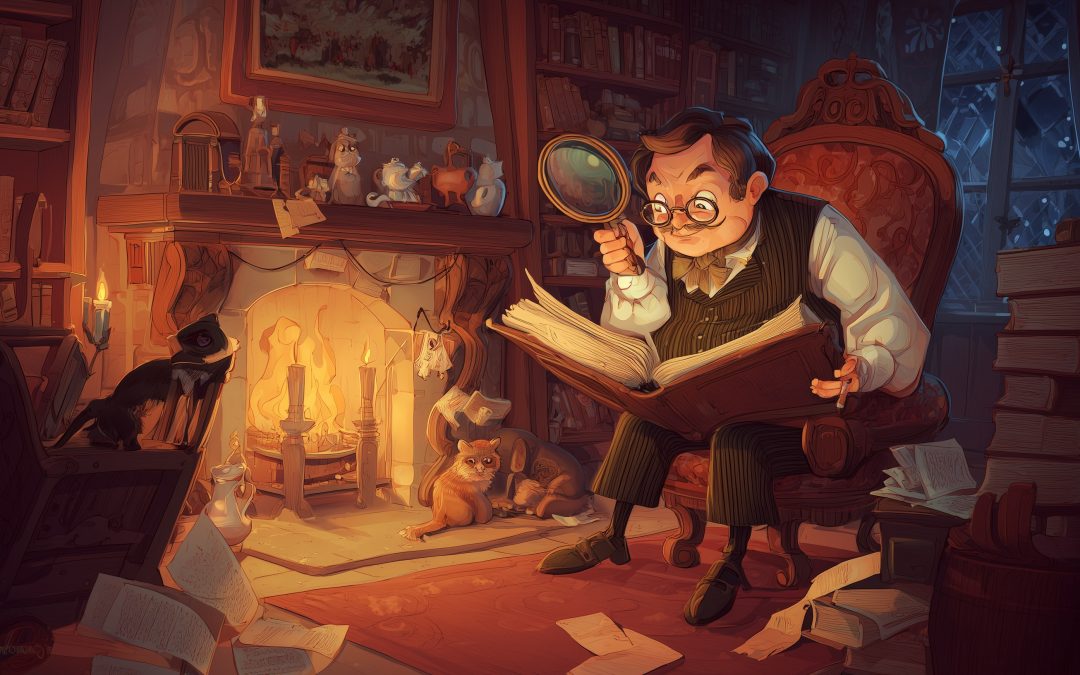How the humble footnote escaped academia to become fiction’s secret playground – part scholarship, part satire, and part sleight of hand.
Once upon a time, the footnote had a simple, dutiful, serious purpose.
It existed to reinforce the truth. It was the quiet companion to academic and historical writing, designed to verify, clarify, or confess. A scholar might tuck a source there, or apologise for an uncertainty. It was the scaffolding of knowledge, the part you weren’t meant to read unless you were particularly keen.
It said: authenticity. It said: trust me, I’ve done the work so you don’t have to.
But then the novel got hold of it – because it was there to be colonised and subverted.
Its very pomposity and elevation was a weapon in the hands of the imaginative.
In the hands of inventive writers, the footnote was flipped. It has become a portal: a sly, digressive, sometimes anarchic tool that can expand a story, deepen its world, or puncture its own seriousness. Where once it was the preserve of fact, it now dances with invention, irony and play.
From truth to texture
The academic footnote came of age in the Enlightenment, as writers sought to prove that what they said was rooted in evidence. Edward Gibbon’s The History of the Decline and Fall of the Roman Empire (1776–89) is famous not only for its grandeur but for its footnotes – learned, sometimes petty, often funny. Gibbon couldn’t resist showing that he knew more than his sources, or that he found them ridiculous.
That’s the first secret of the footnote: it allows two voices to speak at once – the official and the private.
It is an aside, a knowing stage whisper.
So the fiction writers were taking their cue from the dusty truth-tellers.
And that double voice is a writer’s dream.
One of the finest examples of footnotes as a lifeforce is Jonathan Strange & Mr Norrell.
The magician’s trick
In this magical work, writer Susanna Clarke uses footnotes to construct an entire phantom history of English magic. They’re written in the voice of a pompous, well-meaning antiquarian who treats fairy tales like academic case studies.
Some are short citations; others blossom into miniature stories about long-dead magicians and haunted villages. The effect is twofold: they lend a false authenticity — as if Clarke has unearthed her material from dusty archives — and they expand the imaginative world far beyond the main plot.

The same structural trick can be found, in comic form, in Terry Pratchett’s Discworld novels. His footnotes often house the jokes that won’t fit in the sentence: the sly asides, the bureaucratic absurdities, the bits of cosmic pedantry.
They make the world feel alive because they suggest that every detail has a backstory, even if it’s ridiculous. The reader feels they’re wandering through a living encyclopaedia written by an author who can’t help interrupting himself.
- In praise of shorter books – if you can spare the time, of course
- Essential guide to writing a stage play that will pack a theatre
Neal Stephenson’s Cryptonomicon and The Baroque Cycle take another route: his footnotes are intellectual digressions, essays-within-novels, where the machinery of thought becomes part of the story.
David Foster Wallace, in Infinite Jest, goes further still – his endnotes (some hundreds of them) become a structural feature, forcing the reader to flip back and forth, creating a physical experience of distraction and obsession that mirrors his characters’ minds.
Other uses, other tones
Footnotes aren’t only for jokes or world-building. They can serve as critique. In Nabokov’s Pale Fire, the commentary on a poem consumes the poem itself, and the reader slowly realises that the annotator is delusional – the footnotes are not support but story. Junot Díaz uses them in The Brief Wondrous Life of Oscar Wao to comment on history and colonialism, adding a second voice that rewrites the official record from the margins.
In these cases, the footnote becomes a space of dissent — the place where an alternative truth speaks. It no longer supports the text; it interrogates it.
When the footnote fails
Of course, there’s a danger. The footnote can be addictive. They can become an indulgence, a literary affection spun at the expense of the reader’s immersion in the linear story.
Look at me, look at me, shouts the writer, like an annoying child while you just want five minutes.
Stop it, you might think, leave me alone to read.
It flatters the writer’s cleverness, the reader’s patience, and the illusion that depth can be created by density. When it doesn’t serve a clear purpose – when it’s simply an indulgence or a show of knowledge – it becomes disruption.
The rhythm of a story is fragile, and the footnote can easily break it. A good editor should slap down the puppyish footnote writer. Or ask this basic question – why isn’t this sitting in the main narrative? Why do we have to stop – like with an advertising break – and read superfluous stuff.
The best writers know this. They use it sparingly, or with such precision that the reader feels its absence as much as its presence. Clarke’s success lies in restraint: each note feels like part of a larger mosaic, never a mere aside. With DFW you come for the digressions.
Three famous books of fictional footnotes
- Vladimir Nabokov, Pale Fire (1962) – A 999-line poem annotated by a madman, whose notes become the real narrative. The gold standard for metafictional footnotes.
- Susanna Clarke, Jonathan Strange & Mr Norrell (2004) – An entire mythology built out of scholarly notes, giving her fantasy the weight of genuine history.
- Mark Z Danielewski, House of Leaves (2000) – A labyrinth of text and footnotes that mirror the book’s haunted architecture, where reading itself becomes a physical experience.
The Splintered City by Giles Broadbent is out now.

